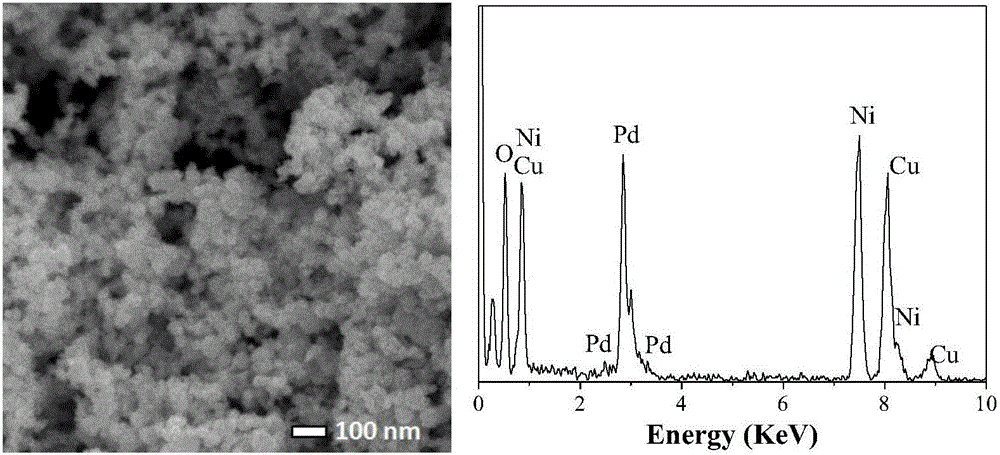Method for preparing cis-pinane by catalyzing alpha-pinene hydrogenation by means of palladium-nickel bimetallic catalyst
A catalyst and hydrogen preparation technology, applied in catalysts, carbon compound catalysts, chemical instruments and methods, etc., can solve the problem of high cost of precious metal catalysts, achieve the effect of simple and easy reaction process, reduce production costs, and prevent aggregation and deactivation
- Summary
- Abstract
- Description
- Claims
- Application Information
AI Technical Summary
Problems solved by technology
Method used
Image
Examples
Embodiment 1
[0017] [Example 1] Preparation of P123 micelle-stabilized palladium-nickel bimetallic nanoparticle catalyst
[0018] Add 3mL of P123 solution (10mg / mL), 1.5mg of palladium chloride, 1.5mg of nickel chloride, and 10mg of tetrabutylphosphine bromide into a 75mL autoclave lined with polytetrafluoroethylene, and stir well at room temperature to dissolve. Then 0.5 mL of sodium borohydride solution (0.2 mol / L) was slowly added dropwise at 30°C. After the dropwise addition was completed, the stirring was continued for 10 min, and the obtained black liquid was the palladium-nickel bimetallic nanoparticle catalyst a.
[0019] attached figure 1 It is shown that the prepared palladium-nickel bimetallic nanoparticles have a particle size of about 5.0nm and good dispersion. attached figure 2 The data show that the prepared nanoparticles are palladium-nickel bimetallic nanoparticles. attached image 3 It shows that the palladium-nickel mass ratio of the palladium-nickel bimetallic nan...
Embodiment 2
[0020] [Example 2] P123 micelle-stabilized palladium-nickel bimetallic nanoparticle catalyst catalyzes α-pinene hydrogenation reaction
[0021] 0.4g α-pinene and 3mg sodium carbonate are added in the reactor that fills the catalyst a that embodiment 1 makes, first with hydrogen the air in the reactor is replaced five times, then charge 0.7MPa H 2 , Stir the reaction at 50°C for 3h. After the reaction, the upper product phase was collected and quantitatively analyzed by gas chromatography. The conversion rate of α-pinene was 99.8%, and the selectivity of cis-pinane was 96.3%.
PUM
| Property | Measurement | Unit |
|---|---|---|
| Particle size | aaaaa | aaaaa |
Abstract
Description
Claims
Application Information
 Login to View More
Login to View More - R&D
- Intellectual Property
- Life Sciences
- Materials
- Tech Scout
- Unparalleled Data Quality
- Higher Quality Content
- 60% Fewer Hallucinations
Browse by: Latest US Patents, China's latest patents, Technical Efficacy Thesaurus, Application Domain, Technology Topic, Popular Technical Reports.
© 2025 PatSnap. All rights reserved.Legal|Privacy policy|Modern Slavery Act Transparency Statement|Sitemap|About US| Contact US: help@patsnap.com



